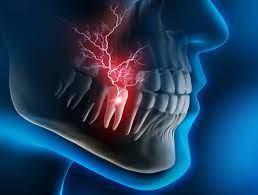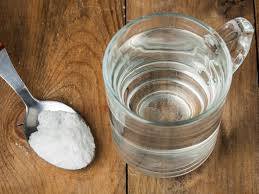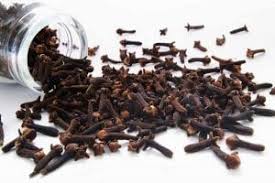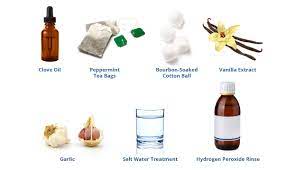
Effective Toothache Relief: Home Remedies You Can Try
Experiencing a persistent toothache can be debilitating, but understanding the right toothache relief techniques can provide much-needed comfort. In this guide, we delve into proven home remedies and tips to alleviate that nagging pain and promote better oral health.

A toothache can cause extreme discomfort and disrupt daily life. Finding relief becomes a top priority. While it’s important to consult a dentist for proper treatment, there are effective home remedies to soothe a toothache. In this post, we will explore toothache remedies that provide temporary relief until professional dental care can be sought.
Causes of Toothaches
Tooth Decay: The most common cause of toothaches is tooth decay. Bacteria produce acids that erode enamel, leading to cavities. These cavities can expose sensitive inner layers, causing pain.
Gum Disease: Periodontal disease or gum infections can also result in toothaches. Receding gums and affected underlying bone can lead to loose, sensitive, and painful teeth.
Dental Abscess: Bacterial infection of the innermost part of the tooth or surrounding gums causes a dental abscess. This can cause severe pain, swelling, and fever.
Tooth Fracture: Cracked or fractured teeth can result from injuries, teeth grinding, or biting hard objects. Exposed nerves can cause intense pain when pressure is applied.
Sensitive Teeth: Some individuals naturally have teeth sensitive to temperature changes or certain foods and drinks. This sensitivity can result in toothache-like discomfort.
Toothache Prevention Tips

Maintain Oral Hygiene: Regular brushing and flossing prevent plaque and bacteria buildup, reducing the risk of tooth decay and gum disease.
Balanced Diet: A diet rich in fruits, vegetables, whole grains, lean proteins, and low-fat dairy strengthens teeth and gums. Limit sugar and acidic foods that erode enamel.
Limit Acidic Beverages: Sodas and citrus juices weaken tooth enamel. If consumed, use a straw to minimize contact with teeth.
Protect Your Teeth: Wear a mouthguard if you grind your teeth at night. Avoid using teeth as tools for opening packages or cracking nuts.
Regular Dental Checkups: Professional cleanings and checkups catch potential issues early and allow timely treatment.
Home Remedies for Temporary Relief of Toothache
1. Rinse with Warm Saltwater:

Rinsing your mouth with warm saltwater is a simple and effective way to ease toothache pain. Saltwater has natural antiseptic properties that reduce inflammation and kill bacteria. Dissolve half a teaspoon of salt in eight ounces of warm water. Swish the solution around your mouth for 30 seconds before spitting it out. Repeat several times a day, especially after meals or before bedtime. Saltwater rinses provide temporary relief and promote oral hygiene by eliminating harmful bacteria.
– Benefits: Saltwater reduces inflammation and provides temporary pain relief.
– How to: Dissolve half a teaspoon of salt in 8 ounces of warm water. Swish the solution in your mouth for 30 seconds before spitting it out. Do not swallow.
2. Cold Compress:

Using a cold compress can reduce swelling and numb the area, temporarily relieving toothache pain. Wrap a few ice cubes in a thin cloth or plastic bag and hold it against the cheek near the affected tooth for 15 minutes. Take short breaks to prevent ice burn. The cold temperature constricts blood vessels, reducing inflammation and dulling pain signals. This method is especially effective for toothaches caused by trauma or injury.
– Benefits: Cold compresses numb the area, reduce swelling, and alleviate pain.
– How to: Wrap a bag of ice or a cold pack in a thin cloth. Apply it to the affected area for 15-20 minutes. Allow a break of at least 10 minutes between applications.
3. Over-the-Counter Pain Relievers:

Over-the-counter pain relievers can help manage toothache pain until a dentist is seen. Nonsteroidal anti-inflammatory drugs (NSAIDs) like ibuprofen or acetaminophen reduce inflammation and alleviate discomfort. Follow the packaging instructions and consult a healthcare professional if you have underlying health conditions or are taking other medications. Remember, pain relievers provide temporary relief and should not replace professional dental care.
– Benefits: Non-prescription pain relievers reduce inflammation and alleviate discomfort.
4. Clove Oil Toothache Remedies:

Clove oil is a natural remedy that can provide temporary relief from toothache pain. To use clove oil, soak a cotton ball in a few drops of the oil and gently apply it to the affected tooth. The natural anesthetic properties of clove oil can help numb the area and alleviate the pain. However, it’s important to use clove oil sparingly and avoid contact with the gums to prevent irritation. Another option is to add a few drops of clove oil to a saltwater solution and rinse your mouth with it. Clove oil contains eugenol, a natural analgesic that can numb the toothache area and provide temporary pain relief. It’s important to be cautious with the amount of clove oil used and avoid direct application to the gums or teeth to prevent any irritation.
– Benefits of Clove Oil for Toothaches: Clove oil contains natural analgesic properties that can offer temporary relief from toothache pain.
– How to Use Clove Oil for Toothache Remedies: Soak a cotton ball in a few drops of clove oil and place it on the affected tooth. Remember not to use excessive amounts of clove oil to avoid irritation.
5. Garlic Toothache Remedies:
Garlic, known for its properties, has been used for centuries as a remedy for toothaches.

Garlic is known for its antimicrobial, antibacterial analgesic, and anti-inflammatory properties and can be a helpful natural remedy for toothache pain. Garlic may provide temporary relief by reducing inflammation and killing bacteria in the mouth. If you’re experiencing a throbbing toothache, here’s how garlic can provide relief: It’s important to note that these remedies should be used in conjunction with seeking appropriate treatment from a dental professional and not as substitutes for professional dental care.
Garlic Clove Application
Start by peeling a fresh garlic clove and slightly crushing it to release its natural oils and mix it with a pinch of salt to make a paste. Apply the crushed garlic paste directly onto the affected tooth or gum area and leave it on for a few minutes before rinsing with warm water. Let the garlic juices work their magic for a few minutes, temporarily easing the discomfort.
Alternatively, you can chew a garlic clove but be careful to avoid contact with your gums.
Garlic Mouth Rinse
Creating a garlic mouth rinse can also help alleviate toothache pain. Crush a small number of garlic and add it to a cup of warm water. Swish the mixture around your mouth for a minute or two before spitting it out. Use a moderate amount of crushed garlic to avoid irritation.
6. Peppermint Tea Bags for Toothache Relief:

Using peppermint tea bags can help soothe discomfort and reduce inflammation associated with a toothache. To use peppermint tea bags, steep a tea bag in hot water for a few minutes. Allow it to cool slightly and place it on the affected area for relief.
– Benefits of Peppermint Tea Bags for Toothaches: Peppermint tea bags can provide relief from toothache discomfort and reduce inflammation.
– How to Use Peppermint Tea Bags for Toothache Relief: Steep a peppermint tea bag in hot water, let it cool slightly, and place it on the affected area.
7. Elevate Your Head to Relieve Toothache:
Elevating your head with an additional pillow can help reduce blood flow to the head and alleviate throbbing toothache pain. When lying down, use an extra pillow to elevate your head slightly for relief.
– Benefits of Elevating Your Head for Toothache Relief: Elevating your head can help reduce blood flow to the head and alleviate throbbing toothache pain.
– How to Elevate Your Head for Toothache Relief: Use an additional pillow to elevate your head slightly when lying down.
8. The Soothing Power of Ginger for Toothaches

Ginger, a root known for its anti-inflammatory and analgesic properties, can also be a natural ally in managing toothache pain. Here’s how you can use ginger to find relief:
1. Ginger Tea
Prepare a soothing ginger tea by grating a small piece of fresh ginger and steeping it in hot water for around 10 minutes. After straining and allowing it to cool down, you can swish the tea in your mouth or take small sips. The warmth of ginger tea can help reduce pain and inflammation.
2. Ginger Compress
For targeted relief, create a ginger compress. Crush a small piece of fresh ginger and place it on a clean cloth. Fold the cloth and gently apply it to the affected area for a few minutes. The warmth from the ginger compress can provide soothing comfort.
9. The Incredible Benefits of Onions for Toothaches

Onions have long been revered for their natural antibacterial and anti-inflammatory properties, making them a popular remedy for various ailments. When it comes to relieving toothache pain and reducing inflammation, the compounds found in onions can be truly powerful.
1. Using a raw onion to alleviate toothache discomfort is a simple yet effective method:
Start by peeling and washing a fresh onion.
Cut a small piece of the onion and place it directly on the affected tooth or gum area.
Gently bite down on the onion to release its healing juices.
Allow the onion to remain in place for a few minutes, letting its magic work.
2. Refreshing Onion Juice Rinse: A rinse with onion juice can provide relief for a wider area of discomfort:
Grate or blend a portion of an onion to obtain its nourishing juice.
Swish the onion juice around your mouth, paying special attention to the side where the toothache is located.
After a minute or two, spit out the onion juice for soothing relief.
10. Honey: A Natural Remedy for Toothache Pain:

For centuries, honey has been revered for its remarkable healing properties. Its natural antibacterial, anti-inflammatory, and soothing qualities make it an invaluable ally in the battle against toothache pain.
One way to harness the potential benefits of honey is by applying it directly to the affected area. Here’s how you can do it:
1. Choose a high-quality raw honey for maximum effectiveness.
2. Take a small amount of honey and apply it directly to the sore tooth or gum area.
3. Allow the honey to sit for a few minutes, giving it ample time to work its magic.
For more comprehensive relief, you can create a honey and warm water rinse. Follow these steps:
1. Mix a teaspoon of raw honey with a cup of warm water and stir until the honey is dissolved.
2. Gargle or swish the mixture around your mouth, ensuring it comes into contact with the toothache area.
3. Spit out the mixture after swishing for a minute or two.
By incorporating honey into your toothache treatment routine, you can tap into its natural healing properties and find relief from the discomfort.

While these home remedies can provide temporary relief from toothache pain, it’s crucial to remember that they are not long-term solutions. A toothache is often a sign of an underlying dental issue that requires professional attention. It’s essential to consult a dentist as soon as possible to diagnose the cause of the toothache and receive appropriate treatment. In the meantime, practicing good oral hygiene, avoiding extremely hot or cold foods, and being mindful of what you eat can also help manage toothache discomfort. Take care of your oral health and seek professional dental care to address the root cause of your toothache. Remember, if the pain persists or worsens, it’s best to consult a dentist to identify and address the root cause of the problem. Ignoring a toothache can lead to more severe dental issues.
Disclaimer: The information provided in this content is for general informational purposes only. It is not intended as medical or healthcare advice, diagnosis, or treatment. Always seek the advice of a qualified healthcare professional with any questions you may have regarding a medical condition or healthcare decisions.
















